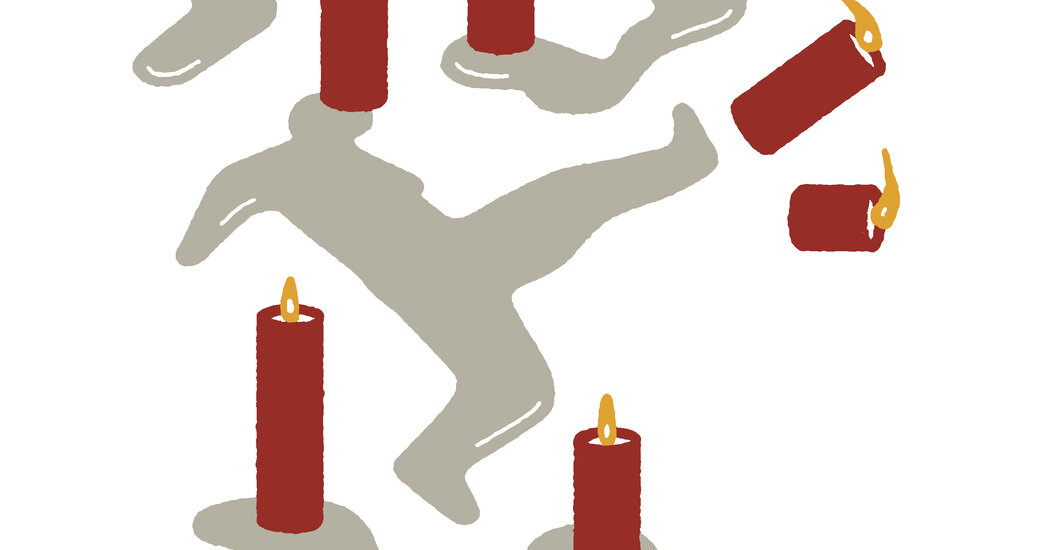Can there ever be restitution for the harm done to generations of Black people in America? Jahmal Mayfield, in his debut novel, SMOKE KINGS (Melville House, 388 pp., paperback, $19.99), takes this question to a provocative extreme.
When police officers kill 17-year-old Darius Evers, his older cousin, Nate, a political activist, wants real justice, not just “another Twitter hashtag, another candlelight vigil, another graffiti memorial.” He starts reading up on older killings — “lynchings, primarily” — and bands together with Darius’s brother, Joshua, and two close friends to begin kidnapping descendants of people who had long ago committed racially motivated hate crimes. The four of them don’t free their victims until they’ve agreed to deposit hundreds of dollars weekly into a secret account. “We like to think of it as a community-building fund,” Nate tells one. “But you can consider it reparations.”
Their plan works, until the day it catastrophically doesn’t, putting them all in the frame of white supremacists and vengeful cops. As everything goes up in flames, Mayfield leans all the way into the discomfort zone.
Mercedes Spivey, the heroine of Teresa Dovalpage’s LAST SEEN IN HAVANA (Soho Crime, 343 pp., $27.95) — the fifth installment in her Havana Mysteries series — was a small child in Cuba when her mother vanished and her father, a soldier, was killed in combat. Her paternal grandmother, Mamina, stepped in to raise her, insisting that life go on as normal. Years later, when Mercedes returns to Cuba to care for her aging grandmother, she knows, thanks to the recent death of her husband, that “normal” often isn’t possible.
But perhaps returning to Cuba means Mercedes can finally learn what happened to her mother, Sarah. Though Mamina continues to be cagey with details, family members offer breadcrumbs, sending Mercedes down a path of adventure and intrigue. Dovalpage is less interested in a whodunit (what happened to Sarah becomes pretty obvious) than she is in exploring how familial bonds can fray, yet manage to hold steady, across the decades.
Erin Young’s 2022 series debut, “The Fields,” was one I didn’t get around to reviewing at the time, an oversight I can rectify with Young’s follow-up, ORIGINAL SINS (Flatiron, 352 pp., $28.99). Both books, featuring the Iowa detective Riley Fisher, convey a strong sense of the Midwest and a nimble familiarity with American police investigations — all the more impressive since Young, who previously wrote historical fiction as Robyn Young, is British.
Riley, now an F.B.I. rookie, has been tasked with investigating threats against Iowa’s newly elected female governor just as a serial rapist and killer known as the Sin Eater emerges in Des Moines after a long hiatus. Riley thinks there’s a connection, but the senior agent she reports to doesn’t have much time for her theories. “I work alone. Always have,” he tells her pointedly. “Trust me, Riley, you don’t want me as an enemy.”
As Riley wonders who, if anyone, she can trust in the F.B.I. field office, she’s also dealing with her messy, complicated family, which has never gotten over the long-ago night when Riley was raped by her brother’s best friend, a crime that “detonated a toxic bomb of shame and guilt and rage.” The last thing Riley wants to do is move back home, but if she can’t hack it in the F.B.I., she won’t have any option.
UNDER THE STORM (Hogarth, 400 pp., paperback, $19) is not Christoffer Carlsson’s follow-up to last year’s outstanding “Blaze Me a Sun,” but its prequel — originally published in Sweden in 2019, and once more wonderfully translated by Rachel Willson-Broyles. I understand why the English-language publication order was reversed, however, because this novel, though still very good, feels like a trial run for the later effort.
When the body of a young woman was discovered in an incinerated farmhouse in 1994, resolution was swift — it was murder, her boyfriend did it, case closed. But for the boyfriend’s nephew, Isak; the arresting officer, Vidar Jörgensson; and the entire community of Marbäck, closure is a myth about to be shattered.
The character trajectories (and tragedies) of Isak and Vidar have real narrative heft, but Carlsson also makes room to explore bigotry, misogyny and nativism, albeit in ways that aren’t quite as seamless and organic as in “Blaze Me a Sun.” That said, my hopes are sky-high for his next book, “The Living and the Dead.”

